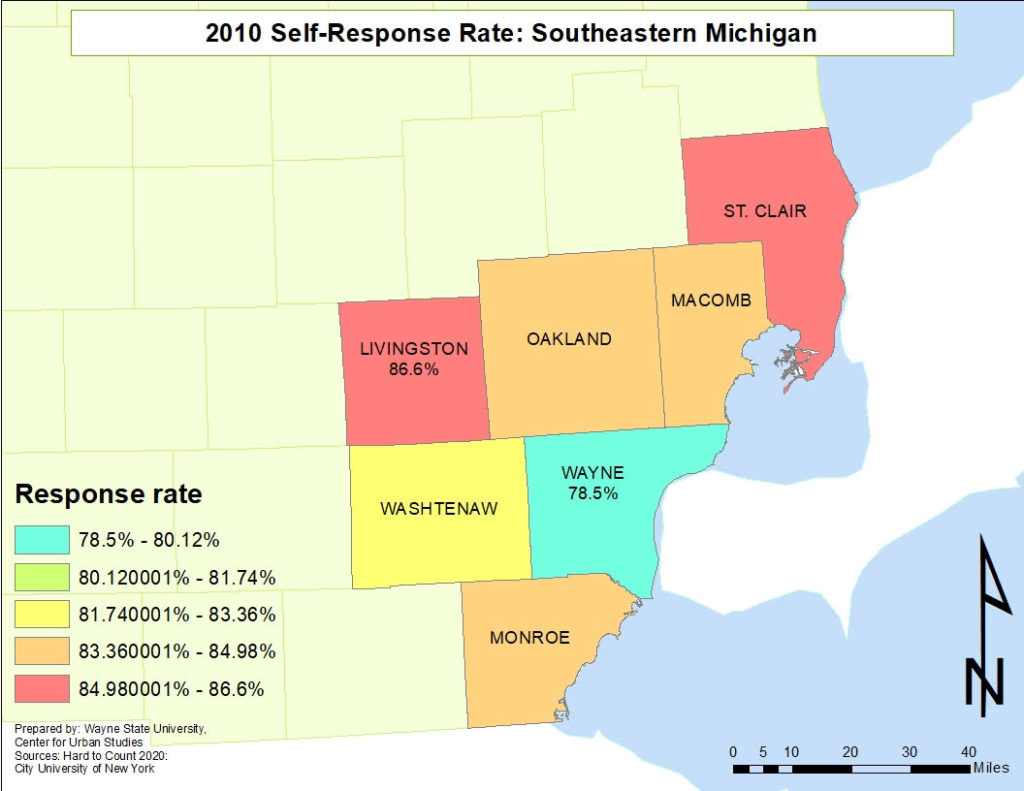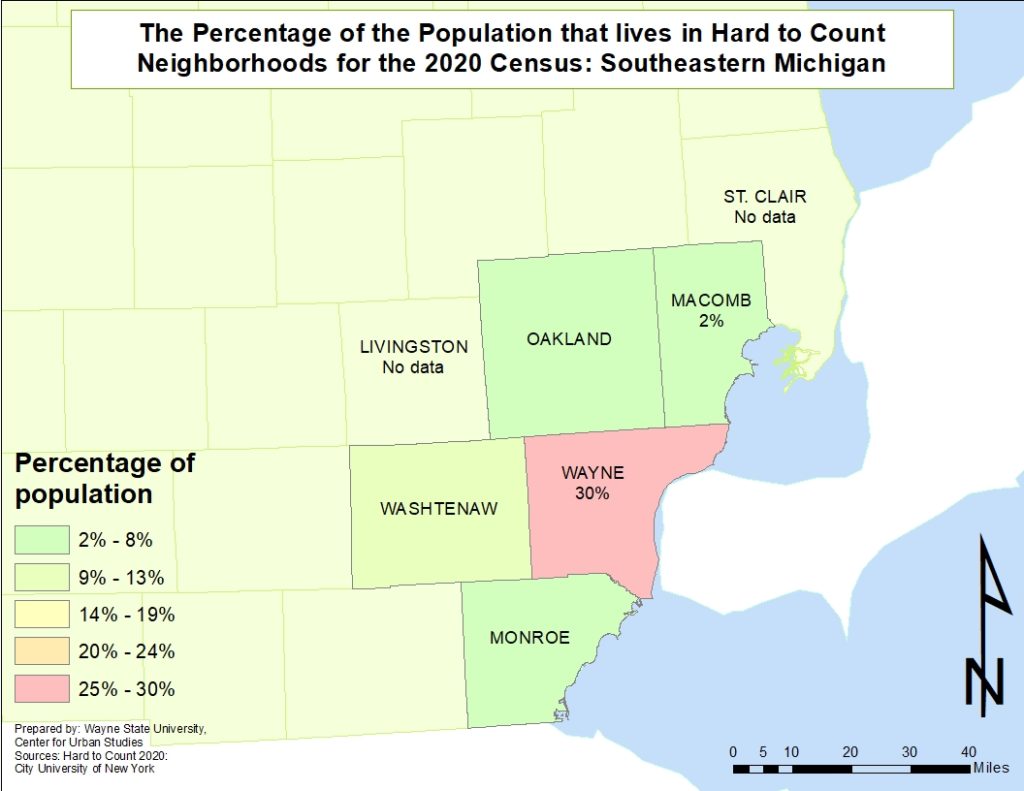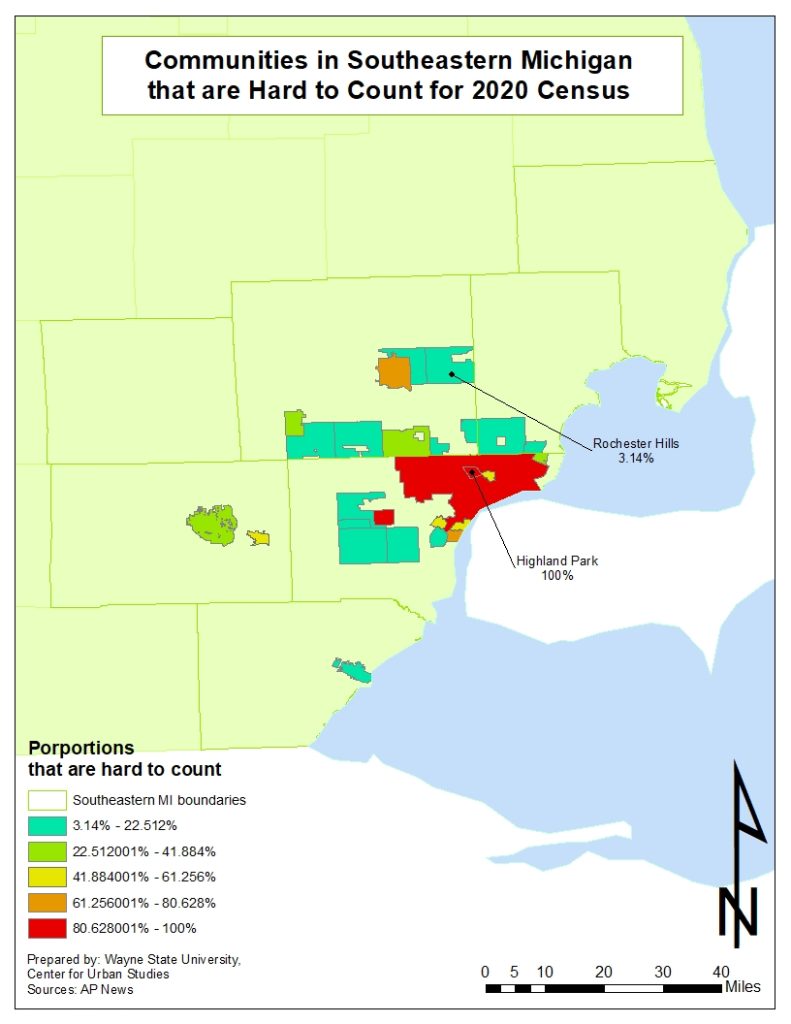The goal of the 2020 Census is to count each person in the U.S., based on their primary residence, by April 1, 2020. However, the fear is that several communities in Michigan will be undercounted in the 2020 Census, meaning a lack of federal funding in the future. And a major portion of 7-county Southeastern Michigan area is in the so-called “hard to count” category.
The majority of the Census is completed by households self-responding via mail or online, starting this year. Throughout the country there are areas where self-response rates are very high, and in other areas they are just the opposite. The areas with previously low self-response rates have been deemed as “hard to count” areas; these areas often include minority and immigrant populations, along with renters and children under the age of 5.
Data for this post was provided by City University of New York, and they deemed an area hard to count if its self-response rate was 73 percent or less for the 2010 Census. This percentage is based on the mail return rate from occupied housing units for the 2010 Census.
As the map shows below, at the county level, self-response mail in rates are high throughout Southeastern Michigan, ranging from 78.5 percent to 86.6 percent. Livingston County had the highest self-response rate at 86.6 percent while Wayne County had the lowest at 78.5 percent. Breaking this data down to the census tract level helped determined what areas would be hard to count for the 2020 Census.

Overall, at the county level, five of the seven counties have hard to count populations. Wayne County has the highest hard to count population at 30 percent and Macomb County has the lowest hard to count population (of those with such a population) at 2 percent. Livingston and St. Clair counties did not have any hard to count data available. Wayne and Washtenaw counties are the only two in the region with hard to count populations in the double digits (30 and 10 percent, respectively).

When looking at the counties on a deeper level, by census tract, we see that Highland Park, Inkster and Detroit (all in Wayne County) have the largest hard to count populations in the region. In Highland Park 100 percent of the population is considered hard to count for the 2020 Census; in Inkster that percentage is 91 percent and in Detroit 86 percent of the population is considered hard to count. The top reason for all three of these cities having such a percentage of hard to count populations is due to the high poverty levels. Other reasons, according to AP News, include a high African American population, low response rates to the American Community Survey and a high percentage of children living below the poverty level. Of the hard to count communities in Southeastern Michigan (27), nine have hard to count populations above 50 percent.
Washtenaw County has the second overall highest percentage of hard to count populations. This is because Ypsilanti has 52 percent of the population considered hard to count. Ann Arbor is estimated to have 29 percent of its population designated as hard to count. The main reason for Ann Arbor’s hard to count status is because of the high percentage of residents between the ages of 18-24 years of age (the University of Michigan is located in Ann Arbor); there is also a high proportion of renters there and a high proportion of individuals who move residences from one year to the next. In Ypsilanti there is a high hard to count population due to high poverty levels and the high number of renters.

To ensure overall high self-response rates the Census Bureau has now made it possible for individuals to complete the Census online, by mail and over the phone. If residents do not respond by one of those methods census takers will knock on the doors of homes that have not responded. Additionally, communities throughout the stateare also putting together large outreach campaigns to ensure members of their communities complete the Census. For example, the City of Detroit has a website that lists Census resources, ways to volunteer for outreach events and how to apply for a job with the Census. For more information on the Census visit 2020census.gov.